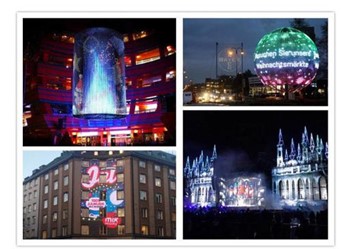As the main carrier of video advertisement, outdoor smart LED displays must have a high-definition display effect. Not only high resolution but also high brightness, high contrast, etc., are required.

The high resolution ensures that high-quality advertising images can be presented well. High brightness can provide a clear image display under direct sunlight; high contrast guarantees color uniformity and beautiful images.
Outdoor smart LED displays must respond to related calls and regard energy conservation and emission reduction as important standards in manufacturing, including product power consumption, product scattering performance, and the amount of steel structure required for product installation.
The main thing about outdoor LED displays is the advertising image. Therefore, allowing more viewers to see pictures and videos is the main goal of outdoor LED displays. It adopts a large viewing angle design, which can cover the viewing angle to the greatest extent.
Since it is used outdoors, weather conditions must be considered. Outdoor LED displays usually have to reach IP65 protection level to adapt to all kinds of bad weather fully. In order to ensure the maximum profit of customers, outdoor LED displays must have strong durability.

1. Site survey
Before installation, the outdoor LED display should be tested for a specific environment, terrain, luminous range, brightness acceptance, and other parameters. To ensure the smooth installation of the billboard, the factory will send corresponding professionals to conduct on-site surveys and make related plans.
2. Build a smart LED display
Outdoor LED displays can be divided into wall advertising screens, hanging advertising screens, and roof advertising screens.
In the actual installation process, different screens are installed in different ways. For screens with a higher installation position, cranes and cranes should be used for partial lifting according to the distance and height, and the installation personnel should cooperate.
Smart LED displays are used for aerial operations to have higher requirements for installation and use.
3. Debugging of luminous range

After the screen is installed, we need to test a specific range of light radiation. The light radiation range is different, and the viewing angle of the LED display is also different.
According to the on-site acceptance ability, we must carry out the fixed installation work of the outdoor smart LED display within the normal viewing angle range to ensure that every angle can receive normal and balanced image and subtitle information. Ensure to achieve the best effect of the display.
4. Post-inspection and maintenance
After the smart LED display is installed, you need to check the LED display waterproof, heat dissipation layer, LED indicator waterproof coating, rainproof layer on display, heat dissipation on both sides, power cord and many other fields. These basic components and products constitute the overall product stability.